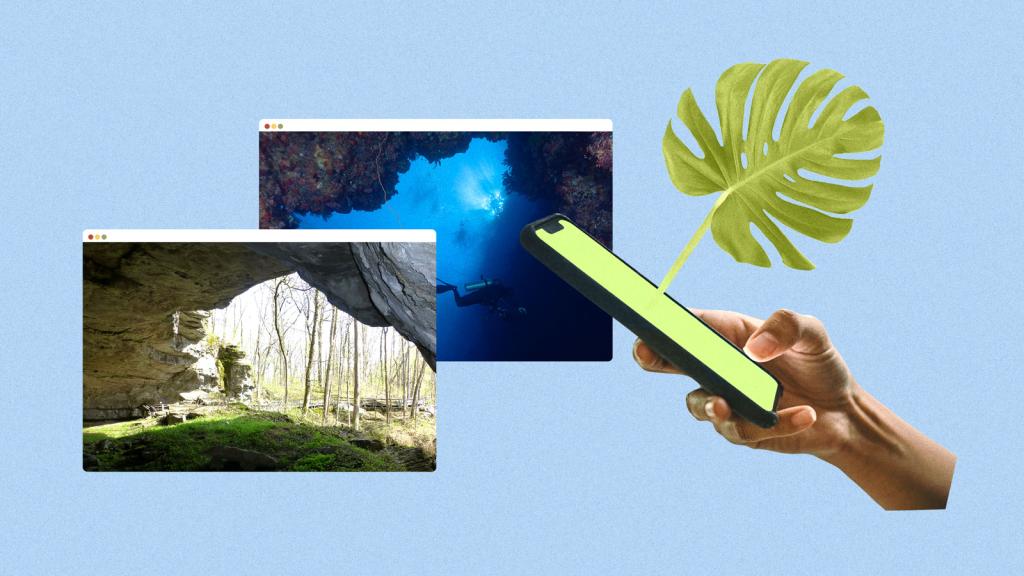This story is part of Fix’s Outdoors Issue, which explores how we build connections to nature, why those connections matter, and how equitable access to outside spaces is a vital climate solution.
Emerald fields stretch as far as the eye can see. Dragonflies zip around in a frenzied dance. In the distance, birds chirp ceaselessly in a stand of tall, ancestral trees, singing in tune with a chorus of cicadas.
Think of the great outdoors, and something like that probably comes to mind. But nature encompasses far more than rolling pastures and abundant greenery. It includes the inky depths of the world’s oceans, the kaleidoscopic hues of coral reefs, and the darkest reaches of the deepest caves. “People often think of ‘green’ space, and ‘blue’ space is catching on. But those are not the only colors in nature,” says environmental psychologist and epidemiologist Matthew Browning.
Browning leads the Virtual Reality and Nature Lab at Clemson University, where he works at the intersection of nature, well-being, and virtual reality. His laboratory is leading one of the first studies of the health-promoting characteristics of en... Read more

